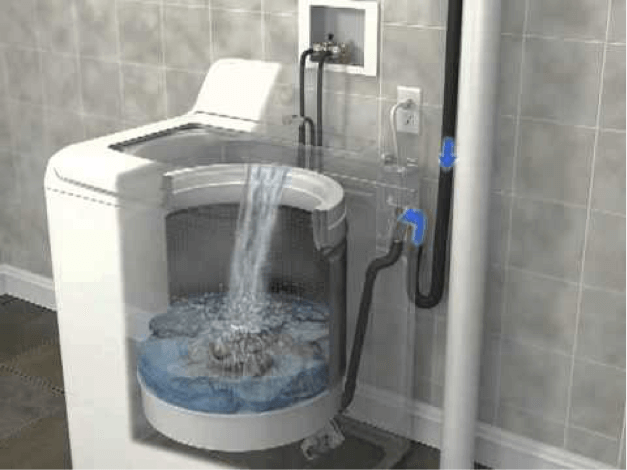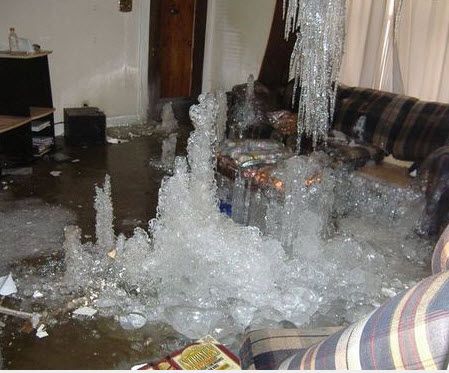Recognizing and Swiftly Fixing a Broken Pipe: An Effective Guide
Recognizing and Swiftly Fixing a Broken Pipe: An Effective Guide
Blog Article
What are your insights and beliefs on How to install a dishwasher safely?

A ruptured pipeline is a major emergency; you can only stand as you watch water you pay dearly to reunite with the earth. In even worse situations, you discover a pool on your cooking area flooring, which is a wonderful trip risk, especially if you have youngsters around. If the pipe that burst remained in your wall surfaces, bad news: you may need to repaint that entire area.
Exactly how can a tragedy like a ruptured pipe be prevented and also taken care of? Well, by listening to your expert emergency plumbing technicians and also complying with these policies.
Exactly how do I know when my pipelines have ruptured?
Varying water pressures
Pipelines do not just burst in a day. You may have seen that your kitchen area tap or shower does not run quickly when you turn the tap. It may stop for a few secs and afterwards blast you with more force than common.
In various other instances, the water may appear regular initially, after that drop in stress after a few seconds.
Polluted water
Lots of people assume a ruptured pipe is a one-way outlet. Fairly the contrary. As water spurts of the hole or gash in your plumbing system, contaminants locate their method.
Your water may be infected from the resource, so if you can, examine if your water storage tank has any troubles. Nevertheless, if your alcohol consumption water is supplied and also purified by the local government, you should call your plumber immediately if you see or scent anything funny in your water.
Puddles under pipelines and sinks
When a pipeline bursts, the outflow develops a puddle. It may appear that the pool is expanding in size, as well as regardless of the number of times you mop the pool, in a few minutes, there's an additional one waiting to be cleaned up. Commonly, you may not have the ability to trace the pool to any type of visible pipelines. This is a sign to call a specialist plumber.
Wet wall surfaces and water spots
Prior to a pipe ruptureds, it will certainly leak, the majority of times. If this persistent dripping goes undetected, the leakage may finish into a wide gouge in your pipe. One simple way to prevent this emergency is to keep an eye out for wet wall surfaces ad water stains. These water discolorations will lead you right to the leakage.
Untraceable dripping noises
Pipe bursts can take place in the most unpleasant places, like within concrete, inside wall surfaces, or under sinks. When your house goes quiet, you might have the ability to hear an annoyingly relentless trickling sound. Even after you've inspected your shower head and cooking area tap, the leaking might continue.
Beloved reader, the dripping may be coming from a pipe inside your walls. There isn't much you can do about that, except inform a professional plumber.
Turn up the Heat
Establish fans to blow heat right into cool rooms. Keep the garage door shut. If you have actually lowered water flow, heat one of the most at risk pipelines (typically in basements and also crawl spaces or near outside walls) with a hair dryer. Leave the tap on while you apply warmth. As you melt ice, the circulation will increase. To avoid pipes from cold, insulate your walls.
Start Eliminating the Water
Get the mop, pails and a shop vacuum cleaner to start to remove the water because you absolutely do not desire it saturating right into every little thing else in the house. And also, a fast tidy up will certainly lower the chances of something getting musty.
What do I do when I spot a ruptured pipe?
Your water meter will remain to run even while your water wastes. To reduce your losses, discover the primary controls and transform the supply off. The water pipe are an above-ground framework beside your home.
How to Fix & Detect a Leaking Pipe
How Do I Know if a Pipe is Leaking?
Leak detection tests can help you determine if your pipe has a leak. Even if you don’t see an apparent leak, you should still conduct leak detection tests regularly to save water and money—and prevent major damage to your home.
Water meter. It can be helpful to figure out what your usual water meter usage numbers are and then monitor them regularly. To monitor your meter, first, turn off all water faucets in your home. Check the meter and write down the numbers. In a few hours, check the meter again. If the numbers have changed, you have a leak. Water gauge. Use a water gauge to test your water pressure. Your showerhead should produce a certain amount of water pressure based on its model and design. If the pressure is lower than it is supposed to be for that specific showerhead, your home likely has a leak. Puddles. Look inside your bathroom, laundry, and kitchen sink cabinets. Puddles around the cabinets or around toilets, tubs, showers, and washing machines indicate the presence of a leaking pipe. You may also notice loose tiles, peeling or flaking paint, or mold caused by water accumulation. Napkin test. Even if you don’t see any puddles, you may still have a leak. You can test for water leaks in the bathroom, laundry, and kitchen by wiping below-sink connections with a napkin, paper towel, or piece of toilet paper. If it becomes damp, you probably have a leaking pipe under the sink. Discolored walls. Walls that are discolored—usually with brown or yellow stains—or bulging might mean that they have been impacted by water damage caused by a leaking pipe. Smell. A leaky pipe will create sitting water, and over time, that water may develop a musty smell. If your home smells musty, but you can’t locate the source, it may be due to a leak. Steps for Fixing a Leaking Pipe
A leaky drain can be remedied by tightening the pipe base, replacing the drain seal, caulking the rim, and tightening the pipe nut. Similarly, a leaking toilet pipe can be treated by tightening the packing nut. You may also need to replace the valve. A leaky faucet may just need tightening or replacement of the washers. If that doesn’t work, consider replacing your faucet. If your pipe has a hole in it, you may want to use a pipe leak sealer or pipe leak tape. This quick fix for water pipe leaks can also temporarily fix a copper pipe leak. https://www.ahs.com/home-matters/quick-tips/how-to-tell-if-pipes-are-leaking/

I found that blog entry about What to Know Before Installing a Dishwasher when doing a lookup on the web. Sharing is caring. Helping others is fun. Many thanks for your time spent reading it.
Ready to assist! Report this page